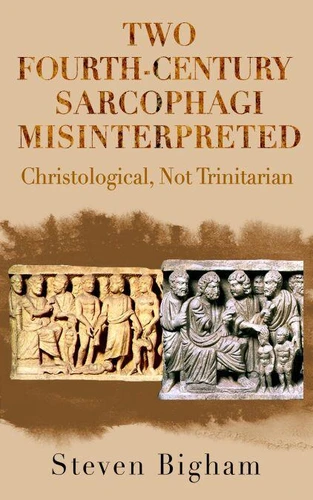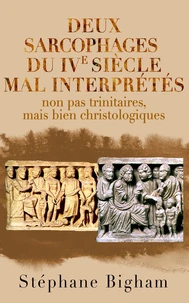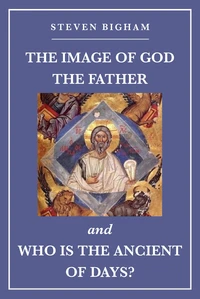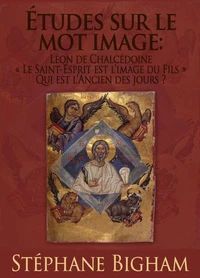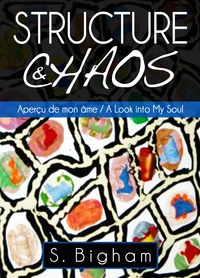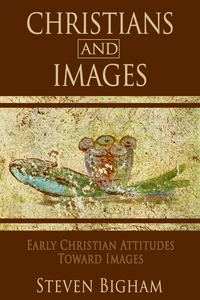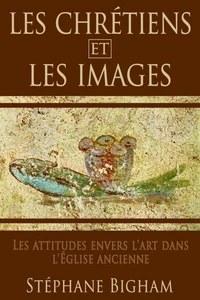Two Fourth-Century Sarcophagi Misinterpreted Christological, Not Trinitarian
Par :Formats :
Disponible dans votre compte client Decitre ou Furet du Nord dès validation de votre commande. Le format ePub est :
- Compatible avec une lecture sur My Vivlio (smartphone, tablette, ordinateur)
- Compatible avec une lecture sur liseuses Vivlio
- Pour les liseuses autres que Vivlio, vous devez utiliser le logiciel Adobe Digital Edition. Non compatible avec la lecture sur les liseuses Kindle, Remarkable et Sony
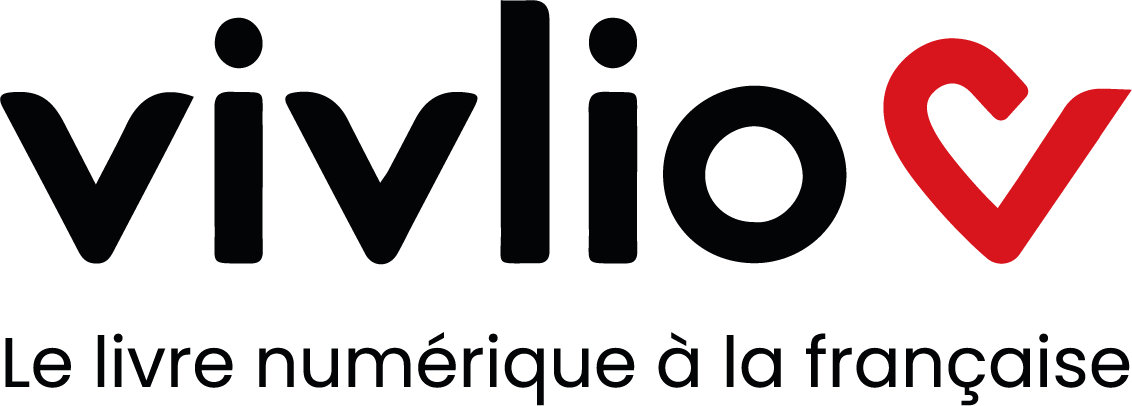 , qui est-ce ?
, qui est-ce ?Notre partenaire de plateforme de lecture numérique où vous retrouverez l'ensemble de vos ebooks gratuitement
Pour en savoir plus sur nos ebooks, consultez notre aide en ligne ici
- FormatePub
- ISBN8215134764
- EAN9798215134764
- Date de parution01/02/2024
- Protection num.pas de protection
- Infos supplémentairesepub
- ÉditeurWMG Publishing
Résumé
Catholic and Protestant theologians, along with the majority of art historians, have traditionally identified the Father, the Son, and the Holy Spirit in two creation scenes on sarcophagi dating from the mid-4th century: the Dogmatic Sarcophagus in the Vatican Museum and the Trinity-Spouses Sarcophagus in the Archaeological Museum of Arles, France. This book presents the viewpoint that scholars, at the time of the discovery of these sarcophagi in 1838 and 1974 respectively, were influenced by the longstanding theological and artistic vision of the West and misinterpreted the images as Trinitarian instead of Christological.
This perspective asserts that anthropomorphic images of the Trinity and God the Father are acceptable, but not encouraged. Therefore, when experts saw three figures in a creation scene of Adam and Eve, they "naturally" identified the three figures as God the Father, the Son, and the Holy Spirit. The author of this study argues that such images, created around 350, would be impossible to conceive if one placed oneself in the theological and artistic world of Christians during that period.
The earliest anthropomorphic images of the Trinity and God the Father only emerged in the Western Middle Ages. The theological perspective on creation during the first 1000 years of Christian history identified the creator as Christ-Logos, the active agent of the invisible Father, and it is he who is represented in Genesis illustrations, even extending to the medieval period in Western Europe, including the creation scenes on the Chartres Cathedral.
In conclusion, the interpreters analyzed the images on the two sarcophagi in light of a perspective foreign to the Christians who created them, thereby distorting the theological vision and meaning of Christian images from this patristic period.
This perspective asserts that anthropomorphic images of the Trinity and God the Father are acceptable, but not encouraged. Therefore, when experts saw three figures in a creation scene of Adam and Eve, they "naturally" identified the three figures as God the Father, the Son, and the Holy Spirit. The author of this study argues that such images, created around 350, would be impossible to conceive if one placed oneself in the theological and artistic world of Christians during that period.
The earliest anthropomorphic images of the Trinity and God the Father only emerged in the Western Middle Ages. The theological perspective on creation during the first 1000 years of Christian history identified the creator as Christ-Logos, the active agent of the invisible Father, and it is he who is represented in Genesis illustrations, even extending to the medieval period in Western Europe, including the creation scenes on the Chartres Cathedral.
In conclusion, the interpreters analyzed the images on the two sarcophagi in light of a perspective foreign to the Christians who created them, thereby distorting the theological vision and meaning of Christian images from this patristic period.
Catholic and Protestant theologians, along with the majority of art historians, have traditionally identified the Father, the Son, and the Holy Spirit in two creation scenes on sarcophagi dating from the mid-4th century: the Dogmatic Sarcophagus in the Vatican Museum and the Trinity-Spouses Sarcophagus in the Archaeological Museum of Arles, France. This book presents the viewpoint that scholars, at the time of the discovery of these sarcophagi in 1838 and 1974 respectively, were influenced by the longstanding theological and artistic vision of the West and misinterpreted the images as Trinitarian instead of Christological.
This perspective asserts that anthropomorphic images of the Trinity and God the Father are acceptable, but not encouraged. Therefore, when experts saw three figures in a creation scene of Adam and Eve, they "naturally" identified the three figures as God the Father, the Son, and the Holy Spirit. The author of this study argues that such images, created around 350, would be impossible to conceive if one placed oneself in the theological and artistic world of Christians during that period.
The earliest anthropomorphic images of the Trinity and God the Father only emerged in the Western Middle Ages. The theological perspective on creation during the first 1000 years of Christian history identified the creator as Christ-Logos, the active agent of the invisible Father, and it is he who is represented in Genesis illustrations, even extending to the medieval period in Western Europe, including the creation scenes on the Chartres Cathedral.
In conclusion, the interpreters analyzed the images on the two sarcophagi in light of a perspective foreign to the Christians who created them, thereby distorting the theological vision and meaning of Christian images from this patristic period.
This perspective asserts that anthropomorphic images of the Trinity and God the Father are acceptable, but not encouraged. Therefore, when experts saw three figures in a creation scene of Adam and Eve, they "naturally" identified the three figures as God the Father, the Son, and the Holy Spirit. The author of this study argues that such images, created around 350, would be impossible to conceive if one placed oneself in the theological and artistic world of Christians during that period.
The earliest anthropomorphic images of the Trinity and God the Father only emerged in the Western Middle Ages. The theological perspective on creation during the first 1000 years of Christian history identified the creator as Christ-Logos, the active agent of the invisible Father, and it is he who is represented in Genesis illustrations, even extending to the medieval period in Western Europe, including the creation scenes on the Chartres Cathedral.
In conclusion, the interpreters analyzed the images on the two sarcophagi in light of a perspective foreign to the Christians who created them, thereby distorting the theological vision and meaning of Christian images from this patristic period.

